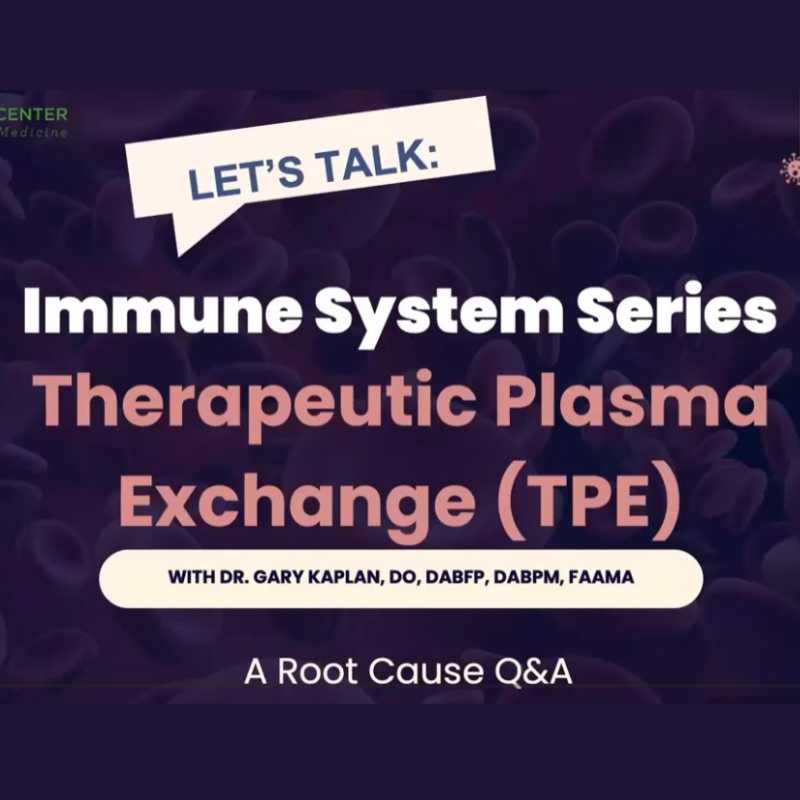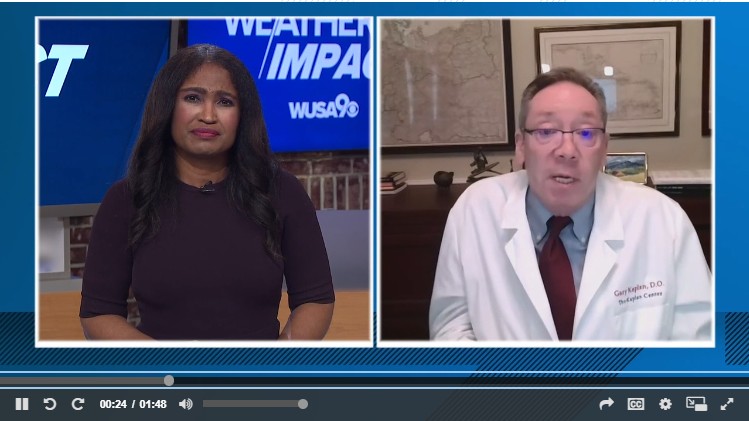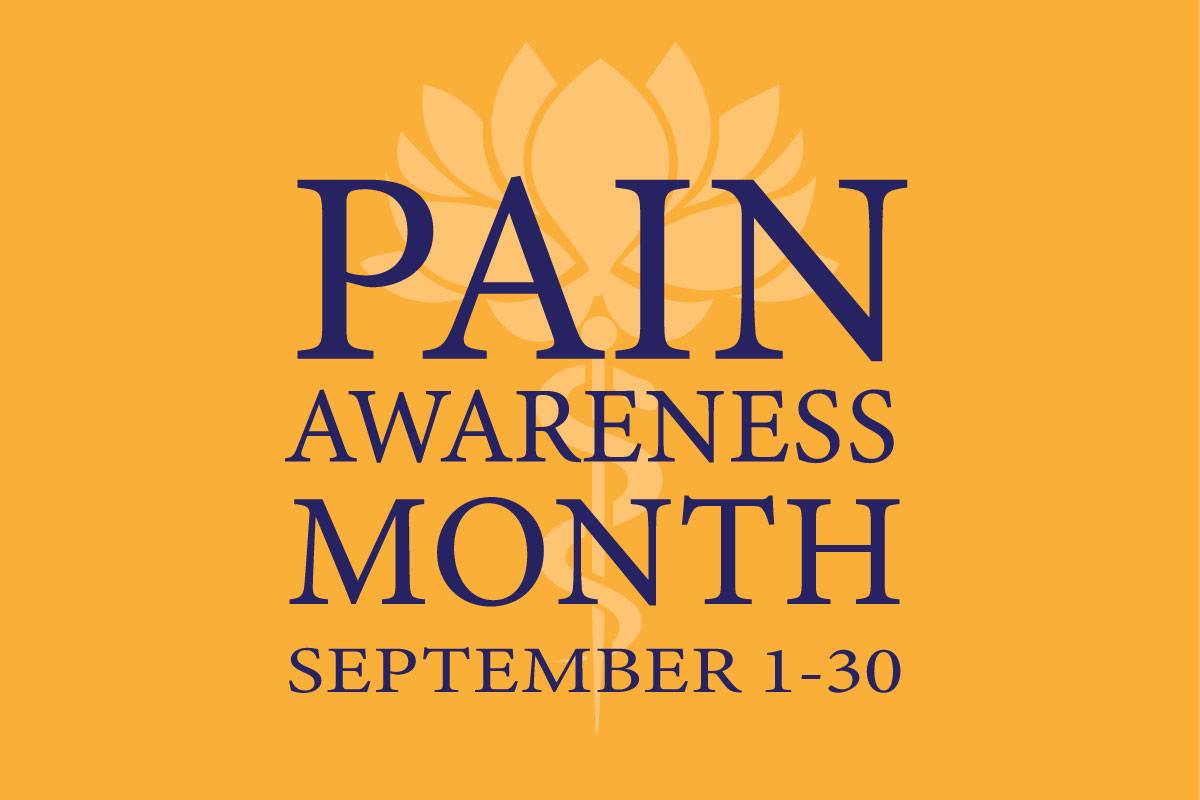
5 Ways We Can Keep Your Immune System Strong
December 10, 2025/by Kaplan Center
Want to Take Your Workout to the Next Level Next Year? These Tips Can Help
December 8, 2025/by Kaplan Center
Dr. Kaplan’s Dos and Don’ts of the Holiday Season
December 3, 2025/by Kaplan Center
Let’s Talk Webinar – A Root Cause Q&A
December 2, 2025/by Kaplan Center
Navigating Holiday Meals with Gut Issues: Simple Tips for a Comfortable Season
December 1, 2025/by Chardonée Donald, MS, CBHS, CHN, CNS, LDN
Craniosacral Therapy for TMJ | Say Goodbye to the Daily Grind
November 19, 2025/by Patricia Alomar, M.S., P.T.
From Compassionate Care to Personal Healing: A Letter to My Patients
November 18, 2025/by Kaplan Center
8 Steps to a Healthier Gut—and a Longer, Healthier Life
November 18, 2025/by Kaplan Center
Mid-Life Irritability & Fatigue Improved by Hormonal Balancing
November 13, 2025/by Lisa Lilienfield, MD
From Challenges to Change: Dr. Kaplan on Healthcare’s Biggest Challenges
October 29, 2025/by Kaplan Center
Overlooked Dangers of Mold Exposure and How to Stay Safe – Dr. Kaplan Talks to WUSA9
October 27, 2025/by Kaplan Center
Let’s ‘Fall’ Into Wellness: A Nutritionist-Approved Immune-Boosting Recipe for Cold and Flu Season
October 13, 2025/by Chardonée Donald, MS, CBHS, CHN, CNS, LDN
PANS/PANDAS – When Sudden Symptoms Signal Something More
October 9, 2025/by Kaplan Center
Beating Burnout, A Nutritionist’s Perspective
October 1, 2025/by Chardonée Donald, MS, CBHS, CHN, CNS, LDN
3 Things That Can Happen After Stopping GLP-1s
September 11, 2025/by Chardonée Donald, MS, CBHS, CHN, CNS, LDN
What Families Need to Know About COVID and Flu Season
September 3, 2025/by Kaplan Center
September is Pain Awareness Month
September 1, 2025/by Kaplan Center
Dr. Kaplan Spoke to Northern Virginia Magazine About COVID, Flu, and Immunity — Here’s What You Should Know
August 14, 2025/by Kaplan Center
“Why Do I Feel Like Crap?”: The Overlap Between Long COVID and Perimenopause
July 30, 2025/by Kaplan Center
Why People Are Turning to EMDR (and Why You Might Want to Too)
July 23, 2025/by Kaplan CenterAre you looking to improve your overall wellness?
Personalized care you can trust.
Our integrative, non-surgical treatment approach is highly successful in maintaining wellness and also treating chronic pain and illness. For more than 30 years, we have delivered superior, cutting-edge health care in the Washington, DC area.
QuickLinks
Contact Information
Tel: 703-532-4892
Fax: 703-237-3105
6829 Elm Street, Suite 300
McLean, Virginia 22101
Map It
Hours of Operation
Mon – Thu : 8 am – 5 pm, ET
Fri : 8 am – 12 pm, ET
Preparing for COVID-19 and Immune Boosting
/in COVID-19, Long Covid, Nutrition, Wellness/by Kaplan CenterExperts are predicting that many of us in our communities will contract the COVID-19 virus at some point in the next year. So what can you do to prevent getting sick? What do you do if you get sick? Here is some specific guidance:
Prevention:
Please click this link for a complete list of ideas, supplements and herbs for preventing colds and flu. Remember, we’re still in the middle of the flu season!
Here are some other things you can do to be prepared:
If you do get sick:
Remember, this is cold and flu season so every cough, sniffle, and sneeze is not COVID-19. We want to appropriately use emergency rooms so we do not overwhelm our medical system. In addition, we do not want you to be exposed to people with COVID-19.
The vast majority of people who will get sick with COVID-19 will have mild to moderate symptoms and will need to stay at home to recover. We are not sure how long after having the disease you are still contagious. The estimates from experts are between 10-37 days.
Over the years, our office has used a number of strategies to boost the immune system. The following are things that have been used for other viral infections and may be helpful for COVID-19.
These are strategies that might help to boost the immune system:
COVID-19 is a novel illness and we do not have any data showing evidence of protection or treatment with any supplement. There have been studies showing effectiveness on other coronaviruses, such as SARS. Some of these are listed below. Please make an appointment with your doctor, nutritionist, or acupuncturist/herbalist to personalize for your needs.
If you are having difficulty finding these supplements in stores, food as medicine is the best way to get them in their most natural and absorbable form.
Click here for a reference guide on food sources for a variety of immune-boosting nutrients.
We are working hard to stay updated on the most current information in order to provide you with the best care. The Kaplan Center family is here for you as we go through these challenging times together. Please contact our office if you have any questions (703)532-4892.
We are here for you, and we want to help.
Our goal is to return you to optimal health as soon as possible. To schedule an appointment please call: 703-532-4892 x2
SPECIAL REPORT
Understanding Post-COVID Syndrome
Anxiety: Symptoms, Diagnosis and Treatment Options
/in Conditions/by Kaplan CenterAnxiety is loosely defined as an emotion that is characterized by feelings of tension and worried thoughts. Family, finances, health or relationships are all things that we experience anxiety over. This is normal. However, anxiety that starts to overwhelm an individual or affects how they live their day to day life can be harmful.
At the Kaplan Center, we think about anxiety a little bit differently. A growing body of research suggests that it might not be a mental disorder in and of itself, but rather a symptom of physical inflammation stemming from the brain. Celiac disease, an unhealthy diet or thyroid disease are just a few conditions that may be related to anxiety. By recognizing these connections, we are able to take a broader approach to diagnosing and treating anxiety.
Symptoms of anxiety
It is important to separate the normal anxiety that we all experience from a more serious anxiety disorder. Some of the following are things to look for:
Diagnosis of anxiety
The diagnosis of anxiety is one that should be made by a healthcare professional. At the Kaplan Center, we recognize that the causes of anxiety revolve around an individual’s thoughts, emotions, and feelings. In almost all instances, diagnosing anxiety does not require any invasive medical tests.
Our doctors take the time to speak to patients about these issues and allow them to discuss their anxiety as they experience it. To help diagnose anxiety we’ll ask you a few questions about:
Treating anxiety
The under-recognition and under-treatment of anxiety is a widespread problem. Because anxiety can have physical symptoms, it makes the treatment somewhat challenging for traditional medicine to deal with.
At the Kaplan Center, after diagnosing anxiety our goal is to offer treatments that help address the root causes of the condition. Therefore, we offer a wide range of treatment options tailored to each individual. This may include:
We work with patients to create a personalized treatment plan that’s suited to their needs.
In many cases, anxiety is not a single-treatment condition. A holistic approach, such as the one we favor at the Kaplan Center allows us to look at the whole patient. We may suggest one or more of the treatments listed above or include other elements that fit your lifestyle.
We are here for you, and we want to help.
Our goal is to return you to optimal health as soon as possible. To schedule an appointment please call: 703-532-4892 x2
References:
https://www.ncbi.nlm.nih.gov/pmc/articles/PMC4610617/
https://www.apa.org/topics/anxiety/
Dr. Gary Kaplan Speaking at the American Academy of Anti-Aging Medicine Conference
/in News/by Kaplan CenterDr. Gary Kaplan has been invited to speak at the American Academy of Anti-Aging Medicine’s (A4M) Conference in Los Angeles, CA. Several educational workshops/modules will be offered to attendees; topics include Hormone Replacement Therapy, cardiovascular health, peptide therapies, and autoimmune disease.
Dr. Kaplan is participating in Module VI, “DRIVERS OF IMMUNE SYSTEM AND MITOCHONDRIAL DYSREGULATION”; his presentation is titled, “Redefining Chronic Pain: Etiologies, Immunology, and Mitochondrial Dysfunction”.
About Module VI
More than 50 million individuals living within the U.S. now suffer from one or more autoimmune illness and 80% are women. Thirty years ago only one in 400 people developed an autoimmune illness but today one in 12 within the U.S. and one in nine women are diagnosed with an autoimmune illness. Currently, there are 100+ autoimmune disorders all caused by the common thread of autoimmunity. Why the radical change in incidence? Module VI will review the various etiologies of modern-day living that are skyrocketing the incidence of immune and mitochondrial dysregulation and inflammation leading to the clinical manifestations of autoimmune disease, chronic fatigue syndrome, pain, and sleep dysregulation.
About A4M
The American Academy of Anti-Aging Medicine (A4M) is dedicated to the advancement of tools, technology, and transformations in healthcare that can detect, treat, and prevent diseases associated with aging. A4M further promotes the research of practices and protocols that have the potential to optimize the human aging process. A4M is comprised of 26,000 members across the globe, including physicians, health care practitioners, scientists, and governmental officials, all of whom collectively represent over 120 nations.
For more information, visit A4M.com.